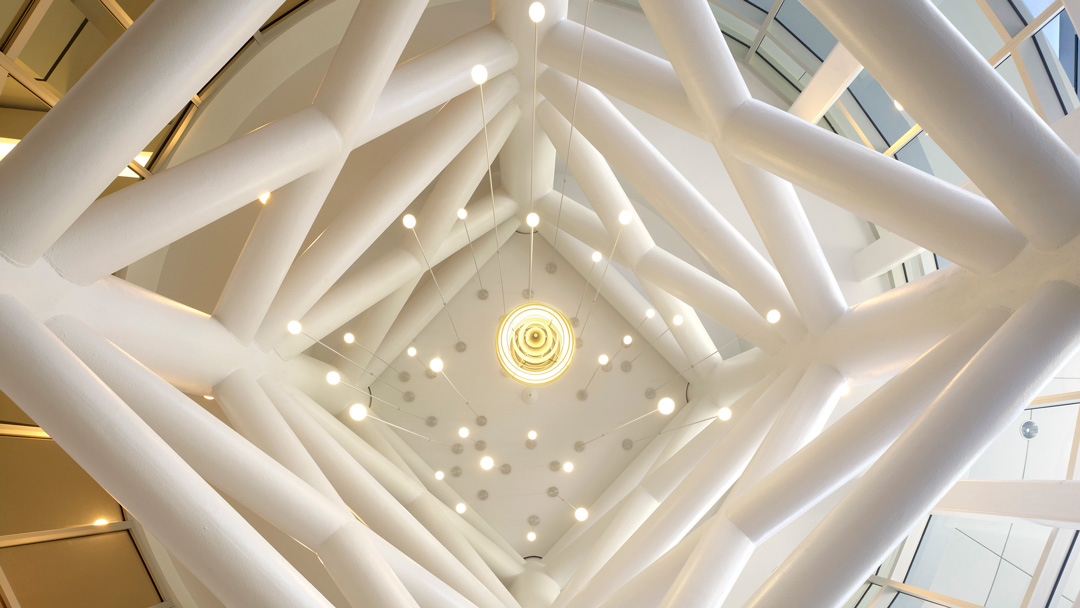University of Maryland, School of Public Policy
The new School of Public Policy is a highly visible symbol of the University of Maryland’s dedication to serving the public good. The School aspires to be one of the Top-10 public policy programs in the nation, known for educating the next generation of public policy leaders. This four-story building brings together more than 90 faculty members and 1,000 students formerly spread among four different facilities, and houses the Do Good Institute, a not-for-profit incubator that is the physical manifestation of the School’s mission.
LEO A DALY’s design concept is rooted in the spatial typology of the ancient Agora and its social heart, the Forum, where democratic thought and public discourse were born. The School’s architecture blends contemporary expressions of transparency and openness with materials and rhythmic elements found in the adjacent Georgian-inspired campus buildings. Its carefully sculpted form is highly visible from Baltimore Avenue, a main thoroughfare flanking the campus.
Framing views of two historic buildings, the Rossborough Inn and Memorial Chapel, the building creates a window into the past as a foundation for the future of policymaking. The cascading architectural form follows the natural slope of Chapel Field, forming an elegant edge to one of the signature open spaces on campus. Do Good Plaza, a shared outdoor event space on the building’s east side, embraces the neighboring Purple Line station, establishing a welcoming new gateway into campus.
The sustainably designed building is expected to achieve a LEED Gold rating. Biophilic design features—such as patterns and finishes that are evocative of natural elements—connect occupants to nature, reducing the building’s environmental footprint and providing healthy and productive spaces for work and study.
To enable the university’s leadership in on-line learning and innovative teaching strategies, the design supports contemporary pedagogies, and focuses on engaging and active learning activities such as small group collaboration, and problem-based learning. Leading edge technology includes an internet protocol (IP) based architecture.
Client
University of Maryland, College Park
At a glance
New building that consolidates operations into a single location
Architecture blends contemporary expressions of transparency and openness
Sustainable features
69,700 SF
Features
Four stories
Outdoor event space
Oval deliberation classroom
Two-story Forum lobby space
Active learning and collaborative workspaces
Services
Master planning
Programming
Architecture
Construction administration

